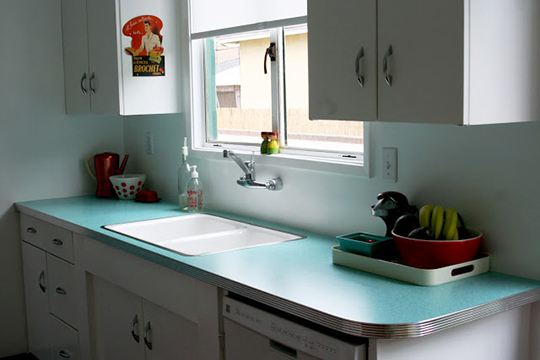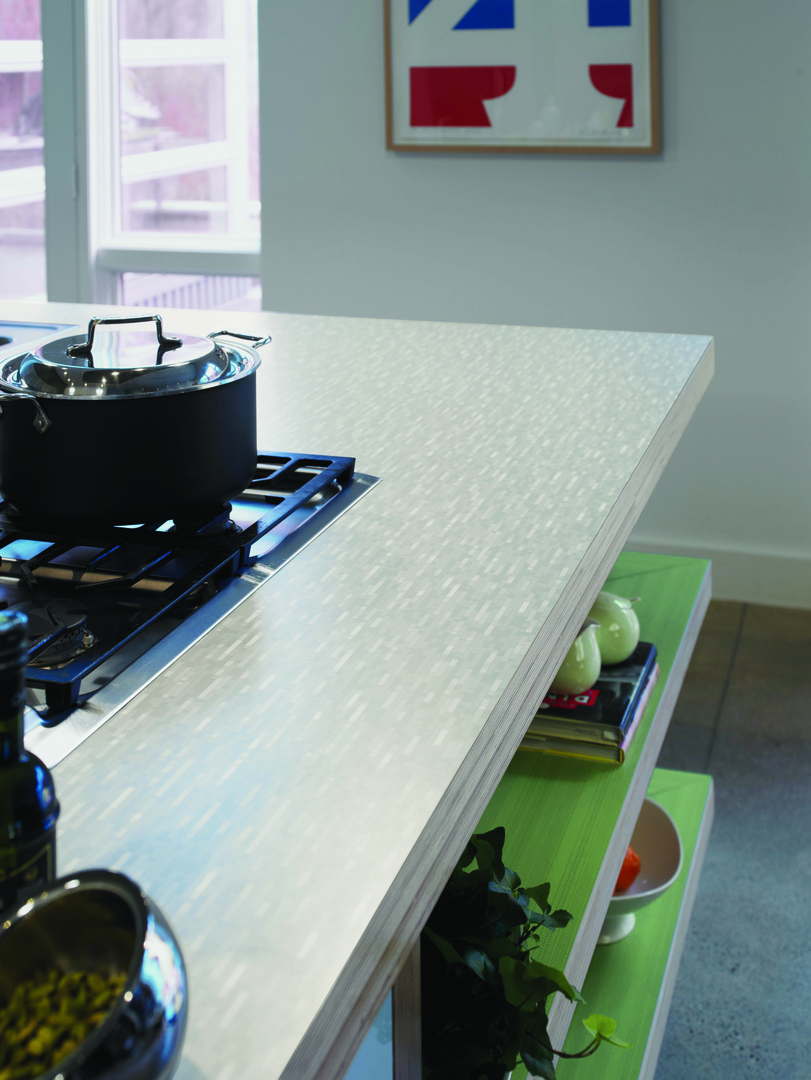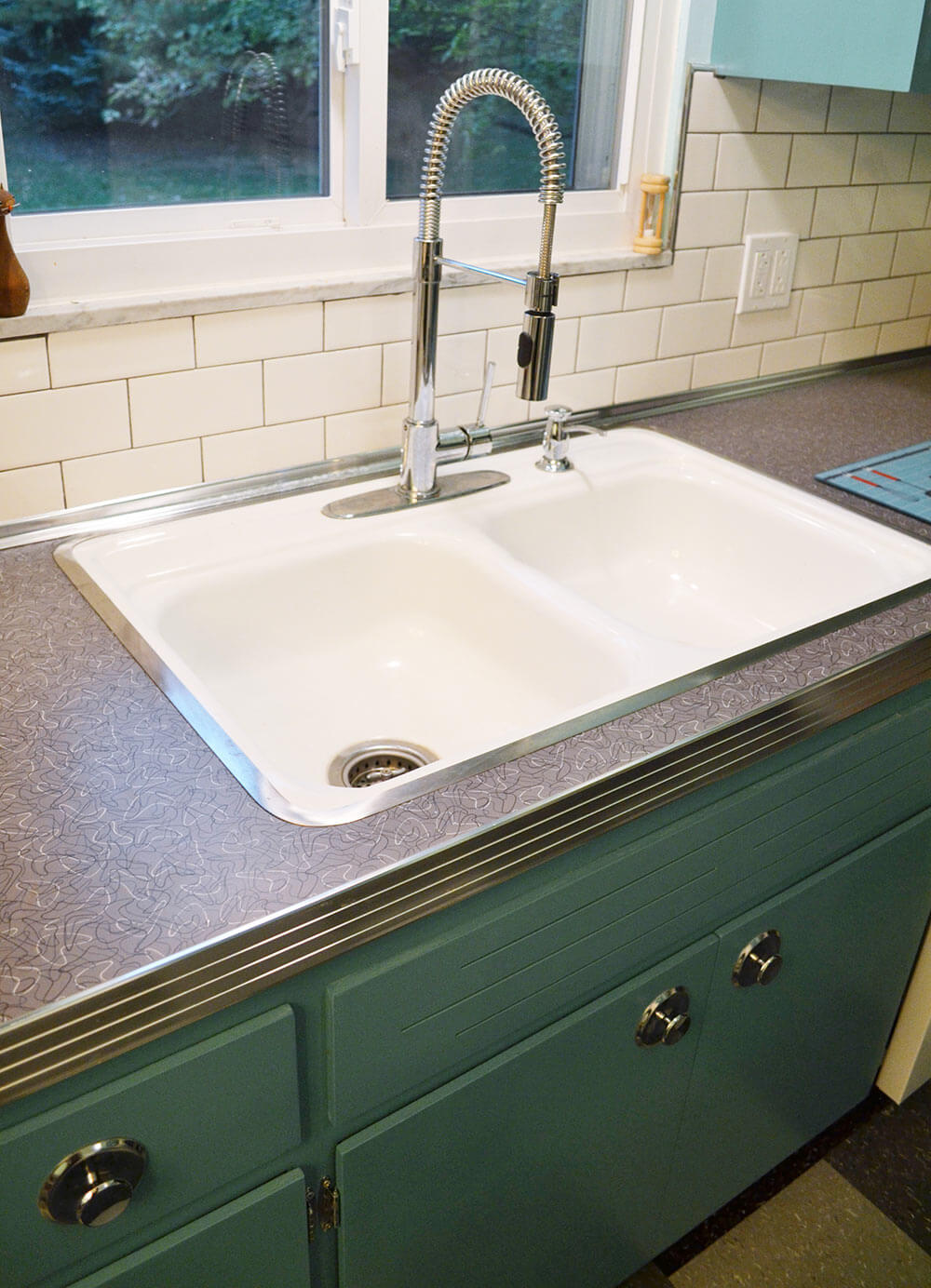When I inherited my grandmother’s 1960s ranch house last year, I was torn between modernizing everything and preserving its charming vintage character. The kitchen still had the original turquoise laminate countertops, which were chipped and stained but undeniably full of personality. Instead of ripping them out for expensive granite or quartz, I decided to explore the surprisingly vibrant retro laminate options available today. What started as a budget-conscious decision became a passionate exploration of mid-century design and modern manufacturing techniques. My kitchen now perfectly balances nostalgic charm with contemporary functionality, and I’ve discovered that retro laminate countertops offer style, durability, and affordability that’s hard to beat in today’s renovation market.
Discovering Modern Retro Laminate Patterns and Colors
The variety of retro-inspired laminate patterns available today amazed me when I started shopping. Modern manufacturers like Formica, Wilsonart, and Pionite have created stunning reproductions of classic mid-century designs alongside entirely new patterns inspired by vintage aesthetics. I spent hours browsing samples of boomerang patterns, atomic starbursts, and colorful geometric designs that perfectly captured the optimistic spirit of the 1950s and 60s.
What impressed me most was the quality difference between vintage laminate and today’s versions. Modern retro laminates use advanced printing technology that creates incredibly detailed patterns with depth and texture that wasn’t possible decades ago. I chose a turquoise boomerang pattern that looked like an authentic 1960s design but had superior scratch resistance and color stability. The printing resolution was so fine that the pattern had realistic depth and movement.
The color options extended far beyond the pastels typically associated with retro design. I found vibrant oranges, deep teals, sunny yellows, and even sophisticated earth tones that worked beautifully with both vintage and contemporary kitchen designs. Many patterns incorporated metallic accents or subtle texture variations that added visual interest without overwhelming the space. The key was finding patterns that felt authentic to the era while meeting modern performance standards.

Installation Challenges and Professional Requirements
Installing retro laminate countertops proved more complex than I initially anticipated, especially since I wanted to preserve some existing cabinetry while updating the surfaces. The first challenge was accurately measuring the existing countertops and creating templates for the new laminate installation. My kitchen had several angles and a curved breakfast bar that required precise measurement and careful planning to minimize waste and seams.
I discovered that professional installation was worth the investment for achieving the seamless, high-quality look I wanted. Laminate installation requires specialized tools for cutting, trimming, and applying adhesive evenly. The contact cement used to bond the laminate to the substrate only gets one chance; there’s no repositioning once the surfaces touch. My installer explained that proper surface preparation was crucial for long-term durability and appearance.
The most challenging aspect was working around my existing appliances and plumbing connections. We had to temporarily disconnect the sink and carefully measure around the cooktop cutout to ensure perfect alignment. The curved breakfast bar required heating the laminate to make it conform to the radius without cracking or bubbling. Professional installation took two days but resulted in perfectly smooth surfaces with nearly invisible seam lines.

Mixing Retro Style with Contemporary Function
One of the biggest concerns I had about choosing retro laminate was whether it would look too themed or kitschy in my daily-use kitchen. I learned that the key to successful retro design integration was balancing bold patterns with neutral supporting elements. I kept my cabinet doors a warm white and chose simple hardware that complemented rather than competed with the countertop pattern.
The lighting choices were crucial for highlighting the retro laminate’s best features. I installed under-cabinet LED strips that illuminated the boomerang pattern beautifully and provided excellent task lighting for food preparation. Pendant lights over the breakfast bar picked up the turquoise color in the laminate while maintaining a clean, contemporary profile that didn’t feel overly vintage.
I discovered that retro laminate works beautifully with modern appliances when you choose the right color coordination. My stainless steel appliances created an interesting contrast with the colorful laminate that felt both nostalgic and current. The key was ensuring that the retro elements enhanced rather than overwhelmed the kitchen’s functionality and flow.

Durability and Performance Compared to Other Materials
Living with retro laminate countertops for eight months has taught me a lot about their practical performance compared to more expensive alternatives. The surface resists most stains beautifully, and daily cleaning requires only a damp cloth and mild soap. I was initially worried about heat damage, but the high-quality laminate I chose handles typical kitchen heat sources well, though I still use trivets for hot pots and pans as a precaution.
The scratch resistance has exceeded my expectations for a laminate surface. Normal kitchen tasks like cutting vegetables directly on the surface (though not recommended) haven’t left visible marks. The pattern’s busy design helps camouflage minor wear that might be obvious on solid-colored surfaces. High-traffic areas around the sink and cooktop still look like new after months of heavy use.
Compared to the granite countertops in my previous home, the laminate requires significantly less maintenance. There’s no need for periodic sealing, special cleaners, or worry about acidic substances causing permanent damage. When my teenager spilled nail polish remover on the surface, it wiped away completely with no lasting effects. The durability-to-cost ratio makes retro laminate an incredibly practical choice for busy families.

Cost Analysis and Budget Considerations
The financial aspects of my retro laminate countertop project were compelling compared to other materials I considered. The total cost, including materials and professional installation, was approximately $8 per square foot, compared to $40-60 per square foot for quartz or granite. These significant savings allowed me to allocate budget to other kitchen improvements like new appliances and lighting.
The cost breakdown included $4 per square foot for the laminate material itself, with installation labor adding another $4 per square foot. Additional costs included substrate preparation, edge treatments, and disposal of old countertops. Even with these extras, the total project cost was less than one-quarter of what granite installation would have been.
From a value perspective, the retro laminate countertops have proven to be an excellent investment. Friends and visitors consistently compliment the unique style, and several have asked for my contractor’s information to replicate the look in their own homes. The distinctive appearance has become a conversation starter and selling point that adds character to my home without the premium price tag of luxury materials.

Maintenance Tips and Long-Term Care Strategies
Maintaining my retro laminate countertops has been remarkably simple compared to the natural stone surfaces I’ve owned previously. Daily cleaning involves wiping down with a damp microfiber cloth and mild dish soap, which removes most food residues and maintains the pattern’s vibrant colors. I avoid abrasive cleaners or scouring pads that could dull the surface finish over time.
For deeper cleaning, I use a paste made from baking soda and water for stubborn stains, followed by thorough rinsing. This gentle abrasive approach has successfully removed coffee stains, berry juice, and even permanent marker without damaging the laminate surface. I’ve learned that prompt cleanup prevents most staining issues, and the busy retro pattern helps disguise minor imperfections.
Long-term care focuses on protecting the surface from excessive heat and sharp impacts that could cause permanent damage. I use cutting boards religiously and have strategically placed trivets near the stove and coffee maker. The edges require occasional attention to ensure they remain firmly bonded, but overall maintenance requirements are minimal. After eight months, my countertops look virtually identical to installation day.

Are retro laminate countertops durable enough for everyday kitchen use?
Absolutely! Mine have held up beautifully to daily cooking, baking, and family life for eight months. The high-quality laminate resists stains, scratches, and normal wear much better than I expected. While they’re not indestructible like quartz, they’re incredibly practical for busy kitchens when properly maintained and protected from excessive heat.
How do I choose retro laminate patterns that won’t look dated in a few years?
I focused on authentic mid-century patterns rather than trendy interpretations. Classic boomerangs, atomic starbursts, and geometric designs have proven staying power because they’re rooted in design history. Choose patterns you genuinely love rather than what’s currently popular, and consider how they’ll work with future updates to other kitchen elements.

Can I install retro laminate countertops myself to save money?
While possible for experienced DIYers, I strongly recommend professional installation. The contact cement application requires precision and experience to avoid bubbles or misalignment. My installer’s expertise was worth the cost for achieving seamless results. However, if you’re confident with tools and have laminate experience, it can be a rewarding DIY project.
How do retro laminate countertops compare to butcher block or tile alternatives?
Laminate requires much less maintenance than butcher block (no oiling or sanding) and has no grout lines like tile that can harbor bacteria. The seamless surface is more hygienic and easier to clean than both alternatives. Cost-wise, laminate is comparable to tile but significantly less than quality butcher block, making it an excellent budget-friendly option.

Will retro laminate countertops hurt my home’s resale value?
Quality laminate in good condition doesn’t typically hurt resale value, especially when it’s part of a cohesive design scheme. My real estate agent friend says unique, well-executed retro kitchens often appeal to buyers looking for character. The key is choosing timeless patterns and maintaining them well rather than going too bold or themed.
What’s the biggest maintenance mistake to avoid with retro laminate countertops?
Never use abrasive cleaners, steel wool, or harsh chemicals that can dull the surface or damage the pattern. I learned to clean spills immediately and always use cutting boards and trivets. The biggest mistake I see others make is treating laminate like it’s indestructible, but with basic care, it performs beautifully for years.

Related articles:
- Vintage Laminate Countertops
- Laminate Countertops Makeover
- Refinish Laminate Countertops
- Cutting Laminate Countertops
- Retro Laminate Countertops
- Laminate Countertops For Bathroom
- Black Marble Laminate Countertop
- Painting Kitchen Laminate Countertops
- Quartz Laminate Countertops
- Laminate Countertops Installation